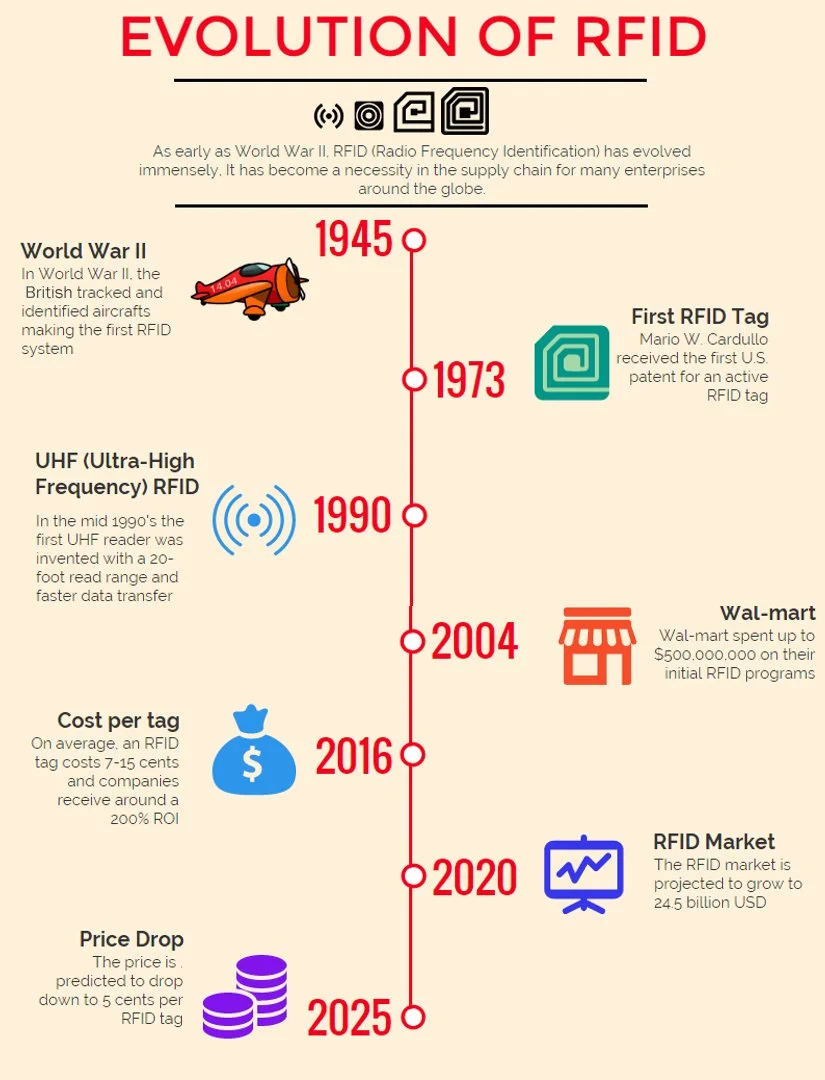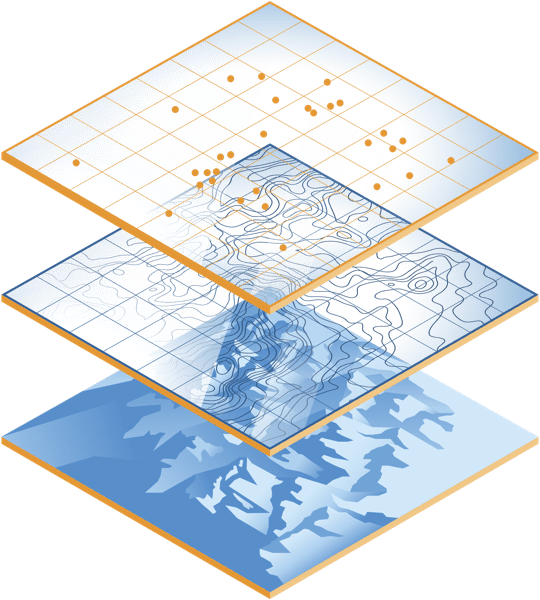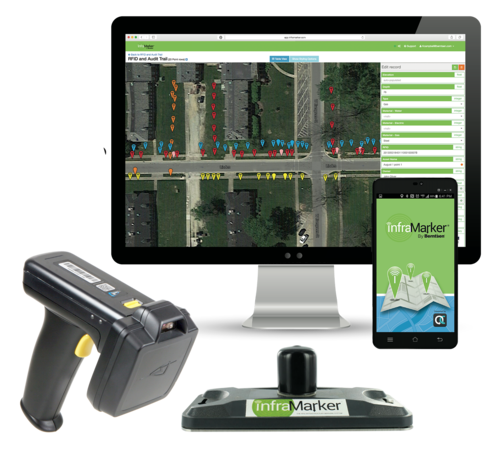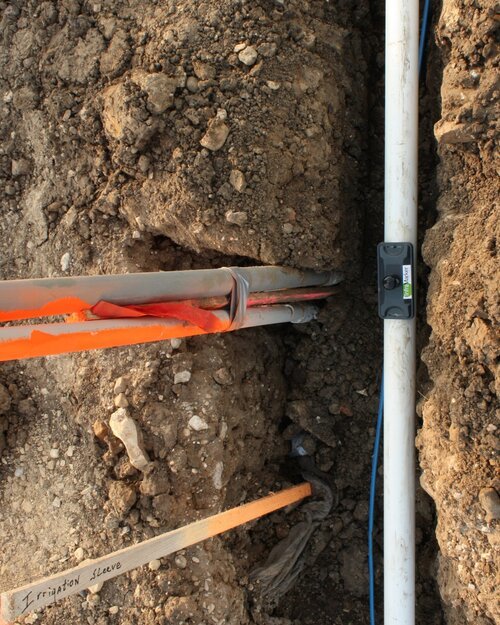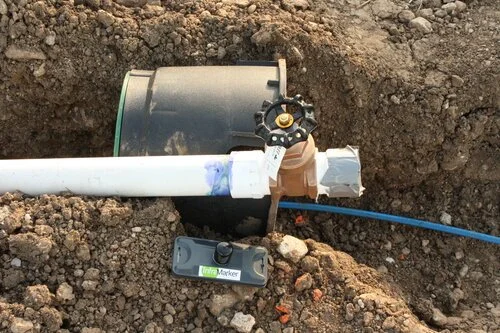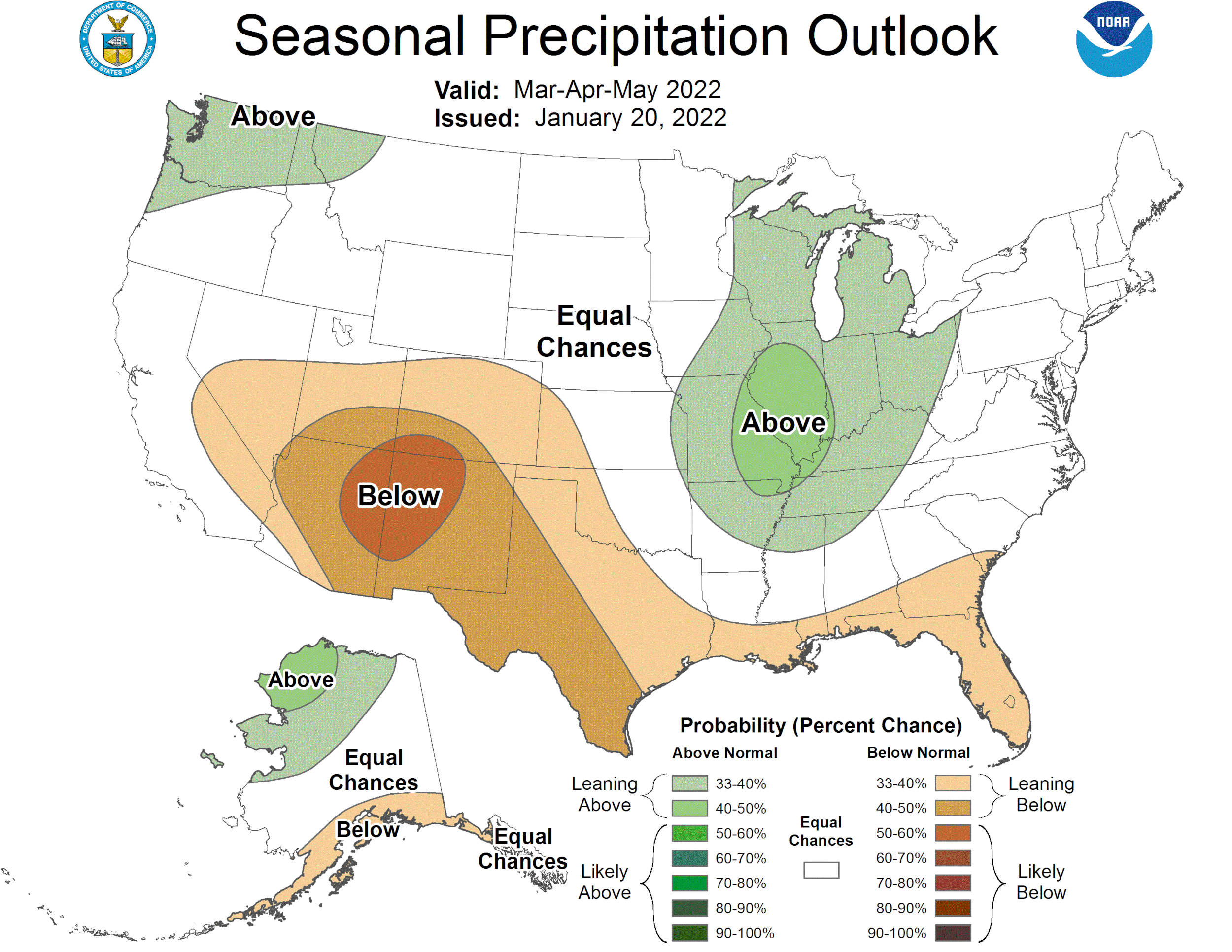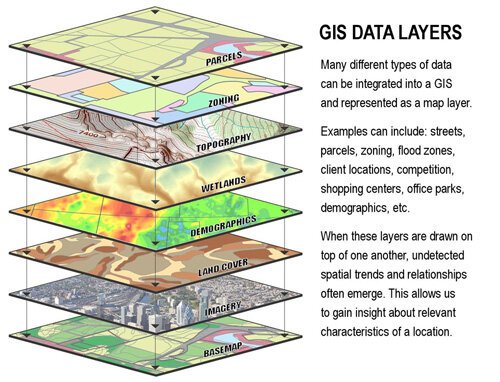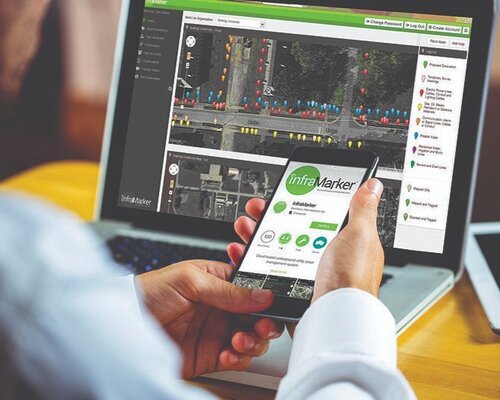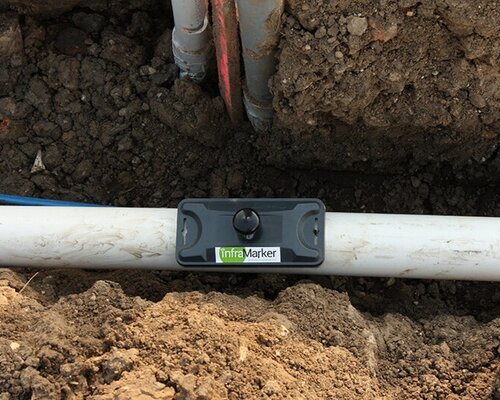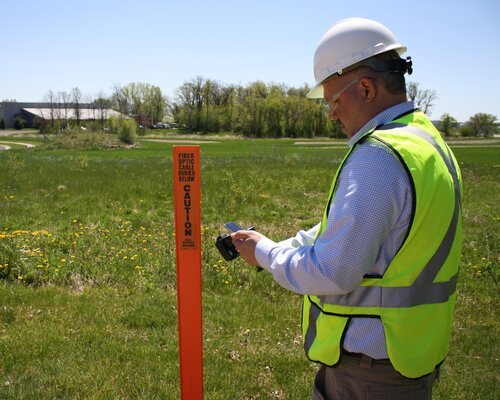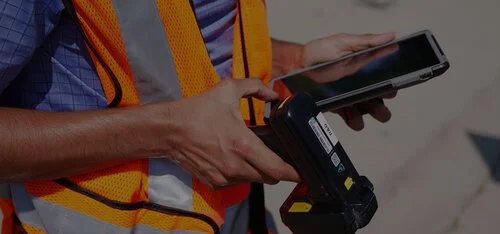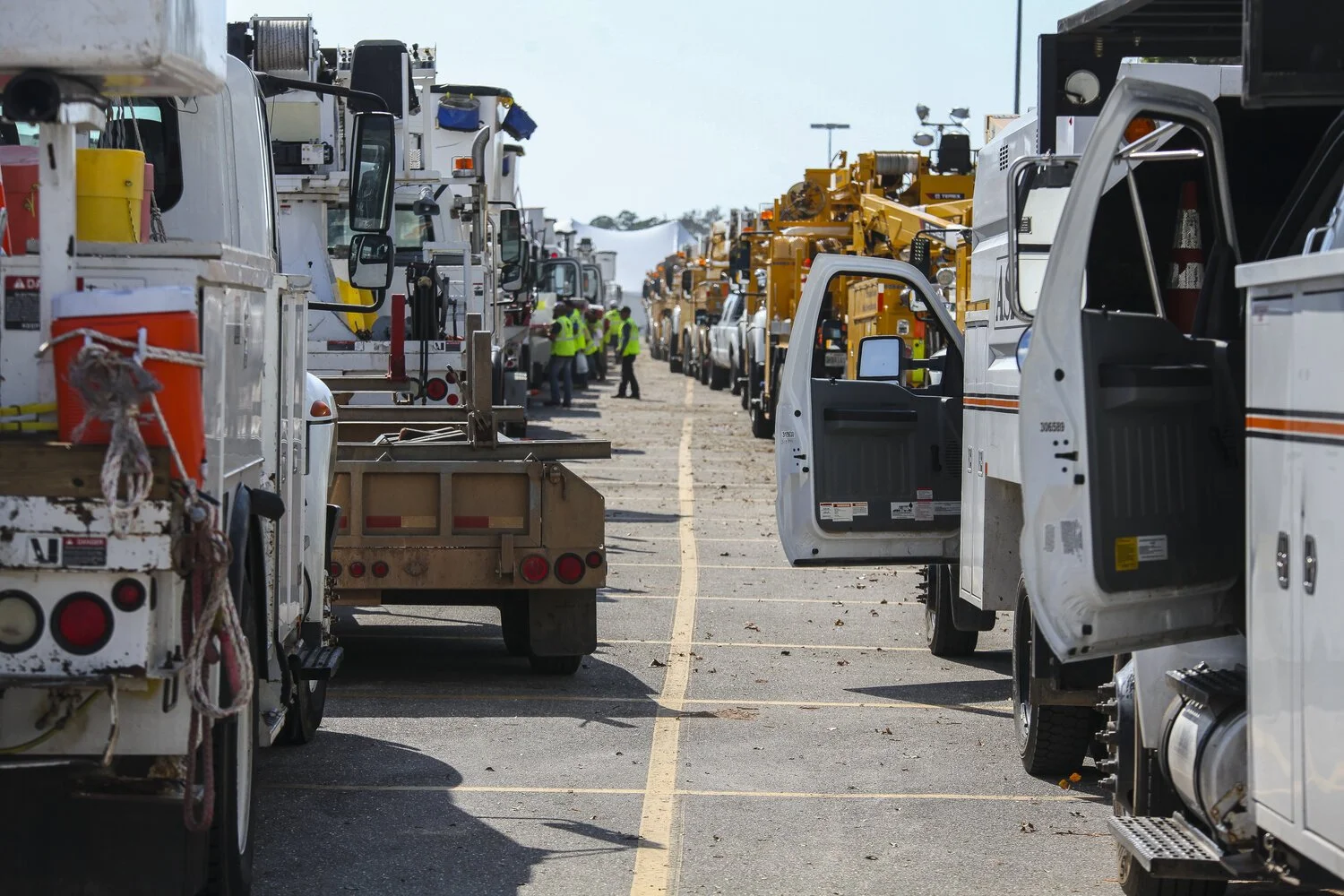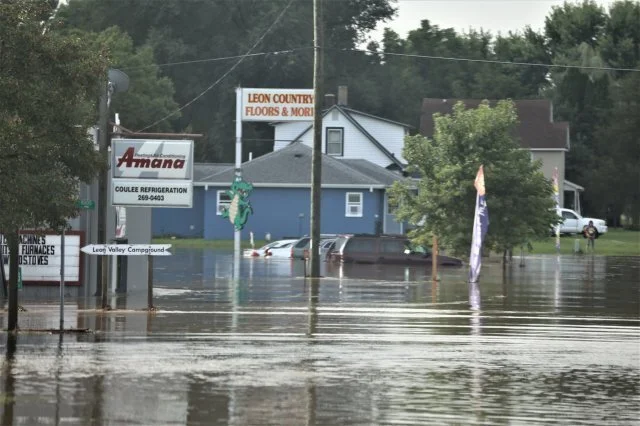RFID in Revolutionizing Asset Tracking Across Industries
A recent article highlighting the 25 Technologies that have changed the world lists the usual blockbuster inventions, such as the Apple iPhone, Wi-Fi, AI, facial recognition, drones, DNA testing, social platforms, quantum computing and bitcoin. However, not all of these world-changing technologies are so famous. Who knew that Radio Frequency Identification (RFID) is a world-changing technology?
A recent article highlighting the 25 Technologies that have changed the world lists the usual blockbuster inventions, such as the Apple iPhone, Wi-Fi, AI, facial recognition, drones, DNA testing, social platforms, quantum computing and bitcoin. However, not all of these world-changing technologies are so famous.
Who knew that Radio Frequency Identification (RFID) is a world-changing technology?
RFID is now a key technology across a growing number of industries. RFID uses electromagnetic fields to automatically identify and track objects. This simple technology has just two components: RFID tags (transponders) and RFID readers. The tags contain data, which are accessed by the reader via radio waves. Unlike barcodes, RFID tags do not require line-of-sight to be scanned, making them more versatile and efficient for asset tracking.
The read range of an RFID tag refers to the distance from which the tag can be detected by the RFID reader. There are two basic types of RFID tags – Passive and active. Passive tags do not require batteries and get their power from the electromagnetic waves of the RFID reader.
Read how Amazon is using RFID for its new Just Walk Out technology where customers can grab clothes, hats, shoes, and more—and simply walk out of the store through an exit gate (even while wearing their purchases) by tapping their credit or debit card, or hovering their palm over an Amazon One palm recognition device. No more checkout lines for clothes!
RFID systems are simple, adaptable, and easily connect with a range of hardware and software. That’s why RFID is a world-changing technology.
Read the article from the National Institutes of Health entitled “Radio Frequency Identification (RFID) in health care: where are we? A scoping review”
Read an article by Atlas RFID store about the many ways that RFID is used to identify and manage wine, beer, and spirits.
RFID is being used to identify, verify and connect to utilities - from buried gas lines to fiber to hydrants. Learn more.
Retail
Now that self-checkout is everywhere, we all understand the frustration of scanning bar codes. Fortunately, many retailers are moving to RFID-enabled shopping carts and baskets to improve the customer experience. Instead of struggling to find a code and scan it, the customer just drops the item in the cart/basket, and it’s scanned. Additionally, RFID-enabled shelves can provide in-depth information on any product via the NFC capability on most cell phones.[1]Logistics
Cargo tracking is essential in the logistics industry. Because RFID tags are available in many forms, they can be affixed to nearly everything, from individual packages to shipping containers, vehicles, train cars and so on. Shipments can be tracked in real-time from origin to destination from a distance. Any interruptions can be quickly detected and resolved, saving time and money.Healthcare
If you’ve been in a hospital, it’s hard to miss the medical equipment wheeled into every available space. Hospitals are continually challenged to efficiently use this equipment, not only because of cost, but also because of regulatory requirements. RFID is making a huge difference in keeping track of every device, as well as it’s maintenance history and what specific device has been used on each patient. In many facilities today, patient wrist bands are also RFID-enabled to ensure the patient is accurately tracked as they move through the treatment process.Manufacturing
Tracking inventory parts and manufactured assemblies has always been a challenge in manufacturing. Bar codes were initially used to address the issue, but the requirement for a line of sight reduces efficiency. RFID delivers efficient inventory tracking without visible markers, enabling product monitoring throughout the manufacturing process.Hospitality
Years ago, hotels replaced locks and keys with RFID-enabled cards. Today, the use of RFID is not limited to access control – now, RFID is used for inventory control as well. RFID tags on hotel and restaurant supplies provide inventory control, while tags on amenities such as hair dryers, robes, and so on, help prevent loss.Agriculture
RFID tags are used for tracking and monitoring livestock as well as for monitoring wildlife.
RFID tags on livestock have become commonplace. Tags are placed on animals soon after birth, tracking their passage from farm to stockyard to supermarket. Besides providing food traceability that is so important for health, RFID helps to manage disease within herds. RFID helps to collect data on individual animals’ behavior and health. That means that outbreaks can be quickly detected and treated as they occur.
In wildlife research, RFID tags are placed on managed endangered species populations, migratory birds, or large mammals. These tags enable researchers to identify individual animals, track their movements, and collect a broad range of data.In both livestock farming and wildlife conservation, asset tracking helps prevent theft and poaching. RFID tags can trigger alarms if an animal leaves a designated area or if an unauthorized person attempts to move an animal.[2]
Museums
Recent headlines highlighting the loss of irreplaceable items at prominent museums highlight the challenge curators face as they must receive, catalogue, store, and display millions of artifacts. A new study showed how RFID can help paleontologists keep track of dinosaur bones from dig to display.RFID can help the visitor experience. When issued an RFID-enabled badge, an audio presentation will be triggered by the proximity to the displayed artwork, providing a wealth of information about the work, it’s creator and history. The data generated from each visitor’s visit can be analyzed to gain insight into visitor traffic patterns, exhibit popularity and even the impact of different lighting and environmental conditions over time. This helps the curator better manage the museum.In art museums, priceless works can be tagged with a discreet RFID label that will trigger alarms if the piece is moved without authorization.
Wine
RFID technology helps vineyards maintain accurate inventory information for real-time tracking of product movements, minimizing the risk of over- or under-stock. RFID tags can monitor temperature and humidity throughout the supply chain to maintain product quality and safety. At the retail location, Point of Sale Inventory Replenishment can automatically update the inventory, ensuring that customers can always get their favorite vintage.Infrastructure
RFID is particularly suited to the management of any type of infrastructure asset, from utility poles to buried valves. A simple RFID tag delivers the location, identity and owner of any asset anywhere. If used widely, RFID would enable cities, airports and utilities to better manage excavation and construction by providing on-site verification of any type of buried asset. The cost of unintentional utility strikes costs the U.S. more than $30 billion annually, according to the Common Ground Alliance. This expense is an unnecessary burden on economic development with no upside.
The RFID market is growing rapidly
The global RFID market is expected to grow from USD 15.8 billion in 2023 to USD 40.9 billion in 2032 at a CAGR of 11.1% during this time. As more and more industries leverage the power of RFID, the applications of RFID will expand. The convergence of RFID, IoT, Artificial Intelligence and Machine Learning will deliver transformative technologies to all sectors, making sense of data and providing a new depth and breadth of understanding.
Berntsen is here to help customers take advantage of this technology with its InfraMarker RFID solution. InfraMarker combines the power of GIS with RFID to deliver accurate, verified asset identification any time and anywhere. See how InfraMarker can change your world.
RFID - resilient and adaptable
Radio Frequency Identification (RFID) has been around for a long time. The precursor technology to RFID was originally developed as a musical instrument by the Russian physicist Leon Theremin, patented in 1928. The Theremin produces music by manipulation of electromagnetic fields around two antennae to produce sound.
Radio Frequency Identification (RFID) has been around for a long time. The precursor technology to RFID was originally developed as a musical instrument by the Russian physicist Leon Theremin, patented in 1928. The Theremin produces music by manipulation of electromagnetic fields around two antennae to produce sound.
Key technology during WWII
During WWII, the British used radio frequency identification to detect which incoming aircraft were friend or foe. They placed a radio transmitter on each plane. When it received signals from radar stations on the ground, it began broadcasting a signal back that identified the aircraft as friendly. This is the key function of RFID. A signal is sent to a transponder, which wakes up and either reflects back a signal (passive system) or broadcasts a signal (active system).[1]
Manipulation of radio frequency also played a role in protecting Allied war ships during WWII. In the early 1940s, the Allies were gearing up for a war that would determine the history of the world and were using all available technologies to gain an edge. One of the new weapons was a radio-controlled torpedo that could enhance the range and accuracy of the weapon. A Hollywood actress with a genius-level IQ and an interest in technology heard about this technology. Hedy Lamarr was aware that these torpedoes could easily be jammed by the enemy, rendering them ineffective. Radio jamming is the intentional transmission of radio signals on the same frequency as another communication channel, with the goal of disrupting or interfering with that communication. She believed that if the frequency used to control the torpedo was constantly changing, it would be much more difficult for the enemy to jam the signal and prevent the torpedo from reaching its target.
So she set to work with a friend, Georg Antheil, a composer with an interest in machinery and developed “frequency-hopping” to ensure the radio signals couldn’t be jammed. In frequency hopping, the transmitter and receiver rapidly switch between different channels in a predetermined sequence. This sequence is known to both the transmitter and the receiver, and it is usually designed to cover a wide frequency range to increase the likelihood of finding a clear channel. Lamarr and Antheil received a patent for this technology and donated it to the US Navy, never getting any money from it.[2]
Later, radio frequency technology was used by the Soviets to produce a covert listening device. In 1945 the Soviet Union presented a hand-carved ceremonial seal of the USA to the US ambassador, Averell Harriman. Unfortunately, this wasn’t just a gift, it was a new kind of listening device. Hidden within the artwork was an antenna activated by radio waves that were directed at the US embassy by the Soviets. This served as a microphone and broadcast private conversations back to the Soviets. It wasn’t initially found by embassy staff because the device had no batteries or wires to detect. For seven years, private conversations in Harriman’s study were unknowingly broadcast to the Soviets.[3]
Computers & RFID - a powerful combination
By 1973, memory was added to the radio frequency technology. It consisted of a transponder with 16 bit memory for use as a toll device for the New York Port Authority. The basic patent covers the use of radio frequency (RF), sound and light as transmission carriers.[4] The commercial uses of the technology for passive, contactless identification were apparent, and rapid development and commercialization began in earnest.
Graph derived from a market report by MarketsandMarkets, titled RFID Market Size, Share, Statistics and Industry Growth Analysis Report by Offering (Tags, Readers, Software & Services, Tag Type (Active, Passive), Wafer Size, Frequency (Low Frequency, High Frequency, Ultra-high Frequency), Form Factor, Material, Application and Region - Global Forecast to 2032.
Today, the market for RFID is exploding. According to a comprehensive report by MarketsandMarkets, the global RFID market size is projected to reach USD 40.9 billion by 2032 from USD 15.8 billion in 2023; it is expected to grow at a CAGR of 11.1% from 2023 to 2032. This growth is indicative of the increasing adoption of RFID technology as a powerful enabler of connectivity and data visibility.[5]
Now, RFID is used across all sectors of industry, from agriculture to manufacturing, education, health care, retail, supply chain management – anywhere the instantaneous, contactless and precise identification and tracking of any item is needed. Its simplicity and versatility means that it can be combined with other technologies to deliver location-based data immediately. For example, RFID is being used with artificial intelligence technologies to reliably predict patient falls and detect human activities. It can help provide insight into transport conditions for perishable products, and support sustainability by helping to identify and reduce waste in supply chain management.
RFID & GIS
RFID is now being tapped to help manage all types of assets in combination with Geographic Information Systems (GIS). When used together, GIS and RFID deliver accurate, verified information about any type of asset – even below-ground. This information is incredibly useful when re-locating buried assets before excavation. RFID means that field workers can know exactly what’s below simply by scanning the buried RFID asset tag through InfraMarker RFID apps that display that specific asset’s data.
Berntsen’s partnership with Esri gives users of the popular Survey123 and Field Maps data collection apps the opportunity incorporate the benefits of InfraMarker RFID into their asset tracking. Berntsen’s partnership with HID means that its RFID tags and readers come in a wide variety of configurations, from rugged underground magnetized markers to ultra-thin labels designed for accurate and reliable inventory control.
RFID Journal Live Conference
In a few days, experts will be unveiling the future by sharing the latest applications, enhancements, and new advancements RFID technology. The Conference brings together users, developers, and exhibitors from all over the world at the MGM Grand in Las Vegas from April 9-11. Mike Klonsinski, president of Berntsen will be presenting a session about a unique use of our versatile InfraMarker RFID technology:
Dinosaur Dig to Display: Transforming Asset Management in the Field
Tuesday, April 9 | 1:50 pm to 2:30 pm Room No: 357
Session Description
When 347 fossil specimens were discovered on Standing Rock Sioux lands in South Dakota, the Earth Science Foundation (ESF) turned to technology to advance their fossil recovery operation. The ESF team led the excavation, documentation and handling of paleontological specimens and needed an innovative solution. In response to that need, InfraMarker RFID, HID and Esri ArcGIS joined forces to deliver best asset management practices.
Learn how the solution uses the combined technology to improve field workflows, tracks, and traces bones from field to display, and aids dashboards for operations managers and remote stakeholders.
RFID continues to be a core technology for our future, and the RFID Conference highlights how this simple technology is making our lives better. We look forward to seeing you there!
Public Works — Key to civilization
Public works have been around ever since people found ways to ensure a reliable source of water for their crops. In 4000 BC, the ancient Sumerians created a successful irrigation system that watered fields between the Tigris and Euphrates Rivers.
What does the term “Public Works” mean? It’s one of those terms that are so broad that it almost defies definition.
The American Public Works Association (APWA) says “Because of the multi-faceted, ever-evolving nature of public works, we may never arrive at a final definition but, for now, the following definition seems appropriate: Public works is the combination of physical assets, management practices, policies, and personnel necessary for government to provide and sustain structures and services essential to the welfare and acceptable quality of life for its citizens.”
A Long History
By Saqib Qayyum - Own work, CC BY-SA 3.0,
A 2.4m deep, 12m long, and 7m wide pool known as "The Great Bath" is located at the centre of the Citadel, is made of fine baked waterproof mud bricks and a thick layer of bitumen. It is the earliest public water tank of the ancient world. Adjacent to it are a well that was used to supply water to the bath.
Public works have been around ever since people found ways to ensure a reliable source of water for their crops. In 4000 BC, the ancient Sumerians created a successful irrigation system that watered fields between the Tigris and Euphrates Rivers. In Mohenjo‐Daro, a major urban center of the Indus Civilization (India), a sophisticated system for supplying water and expelling sewage dates back to the mid-third millennium BC. Water came from more than 700 wells and supplied not only domestic demands but also a system of private baths and a Great Bath for public use. Drains and sewers were carefully constructed to facilitate the removal of waste.[1]
Beginning in 586 BC, the Nabataeans, who lived in northern Arabia and the southern Levant, created a sophisticated water collection system which allowed them to build an impressive trade empire in the heart of arid Arabia.[2]
Of course, everyone knows about the Romans, who constructed roads, harbor works, aqueducts, temples, forums, town halls, arenas, baths, and sewers – many of which are still seen today, more than 2,000 years later. These public works were designed to stabilize and strengthen the empire and make the lives of Roman citizens better.
Recent history
Fast forward a couple thousand years, and public works became key to stabilizing the American economy during a time of crisis. Back in 1933, the federal government undertook a massive public works effort to counteract the devastating effects of the Great Depression. For a decade, the federal government poured $3.8 billion through the Public Works Administration (PWA) into projects that radically transformed the country’s infrastructure. Prominent projects included New York’s Triborough Bridge, Grand Coulee Dam, the San Francisco Mint, Reagan National Airport and Key West’s Overseas Highway.[3]
Later, in 1935, President Roosevelt used an executive order to create the Works Progress Administration (WPA). At the time, unemployment was holding steady at 20 percent, and the economy needed a serious boost. The WPA employed mostly unskilled men to carry out public works infrastructure projects. They built more than 4,000 new school buildings, erected 130 new hospitals, laid roughly 9,000 miles of storm drains and sewer lines, built 29,000 new bridges, constructed 150 new airfields, paved or repaired 280,000 miles of roads and planted 24 million trees to alleviate loss of topsoil during the Dust Bowl. Over the course of 10 years, the WPA put 8.5 million people to work, strengthening communities and laying the groundwork for the largest industrial expansion in history -- the wartime economy of 1945.
The Infrastructure Investment and Jobs Act
Today, the country is in the midst of another massive public works investment. The Infrastructure Investment and Jobs Act (IIJA) was signed into law on November 15, 2021. The IIJA is an historic investment in our nation’s infrastructure: $1.2 trillion over five years, including $550 billion in new federal spending, including --
passenger and freight rail;
highway and pedestrian safety;
public transit;
broadband;
ports and waterways;
airports;
water infrastructure;
power and grid reliability and resiliency;
resiliency, including funding for coastal resiliency, ecosystem restoration, and weatherization;
clean school buses and ferries;
electric vehicle charging;
addressing legacy pollution by cleaning up Brownfield and Superfund sites and reclaiming abandoned mines; and
Western Water Infrastructure[4]
The American Public Works Association (APWA)
The APWA is an organization that was founded to help public works professionals improve their skills, share information and work together to find the best ways to help their communities. Along with comprehensive training programs and other resources, the APWA helps its members learn about and apply for funds provided by the Infrastructure Investment and Jobs Act.
Each year, the APWA organizes a conference and exposition to help keep its members informed. This year’s conference, held in San Diego, includes 125 technical and professional development sessions using the latest learning models: classroom, interactive, and "live" learning labs. Additionally, more than 400 companies will be exhibiting the latest technology – including Berntsen International’s InfraMarker Connected RFID in booth 1939.
InfraMarker is key to smooth operations
Today, public works is more complex than ever. Even in small cities, more and more organizations are relying on the power of GIS to help manage their assets and streamline operations. InfraMarker RFID is designed to leverage the power of GIS to accurately mark and manage any type of asset - directly from the asset point itself. Each passive RFID marker identifies the asset, connecting to GIS with a simple scan, providing verified asset identity and launching the the associated workflow. This instant asset confirmation of ]identity removes guess-work from field maintenance and speeds routine inspection and maintenance with accurate documentation.
We invite all public works professionals who manage infrastructure assets to see how InfraMarker RFID can improve asset management by providing verified field asset information that links to any GIS system. Sign up here to chat with Brent Sherman, our Sales Manager for a live demo of how InfraMarker can work for you at the APWA Conference, booth 1939, August 27-29.
See how it works:
References:
[2] https://www.ancient-origins.net/artifacts-ancient-technology/nabateans-002193
[3] https://livingnewdeal.org/glossary/public-works-administration-pwa-1933-1943/
Sources:
https://livingnewdeal.org/glossary/public-works-administration-pwa-1933-1943/
http://www.waterencyclopedia.com/Tw-Z/Water-works-Ancient.html#ixzz89u0Sv4uO
Marking and Mapping – Two Factor Verification for Underground Locating
It’s spring and construction is booming . . . hopefully with fewer actual “booms”, caused by utility strikes. Safe digging is something that’s near and dear to surveyors and any profession that involves excavation. As I mentioned in my last blog, preventable utility strikes cost at least $60 billion annually, not to mention the loss of life and life-altering injuries that can occur.
Blog by Emily Pierce, PLS, CFedS
It’s spring and construction is booming . . . hopefully with fewer actual “booms”, caused by utility strikes. Safe digging is something that’s near and dear to surveyors and any profession that involves excavation. As I mentioned in my last blog, preventable utility strikes cost at least $60 billion annually, not to mention the loss of life and life-altering injuries that can occur.
Geographic Information Systems (GIS)
GIS has emerged as a leading approach to managing utility assets and will become an essential tool for subsurface utility management. But regardless of how accurate GIS maps become, there will always be the need to validate the digital representation of the underground assets depicted in the maps with high quality in-field marking products. Mapping and marking is required.
In today’s world, this is called ‘two-factor’ verification and it is used in solutions like Uber (mobile map coupled with driver verification on arrival), online banking (text to phone to validate your account ownerships you) and your doctor’s office (“please tell me your name and date of birth”).
Surveyors have practiced this for years by using maps and then relying on Berntsen survey markers in the field. Two-factor verification drives safety, reduces errors in identification, and improves operational performance. There is no industry with greater need for two-factor verification than underground locating.
Technology to the Rescue
It is this two-factor verification that Berntsen has been working on with its InfraMarker RFID underground locating solutions. Tying an underground RFID asset identifier to a GIS delivers the best of both worlds – an accurate map with in-field verification.
I can’t help but think of the impact Connected RFID could have on preventing utility strikes if it was widely used. An RFID underground marker has a unique identifier tied to a GIS record so a field worker can identify the asset or particular location – not simply type of utility – before excavating. And RFID is utility agnostic, so the same locating and identification process works for water, gas, electric, or fiber.
We use two-factor verification to make sure we don’t get into the wrong Uber. Why can’t we take the same two-factor approach to make sure that we have safer underground digging?
Questions? Let us know!
Blossoming Blooms
Harmful algae blooms (HABs) are occurring more and more frequently in lakes, rivers, streams and coastal areas across the United States. Further, HABs are occurring where they were never found in the past. View a map from the Natural Resources Defense Council that tracks HABs across the United States.
CONTAINING THE THREAT OF HARMFUL ALGAL BLOOMS (HABS) IN URBAN ENVIRONMENTS
Harmful algae blooms (HABs) are occurring more and more frequently in lakes, rivers, streams and coastal areas across the United States. Further, HABs are occurring where they were never found in the past. View a map from the Natural Resources Defense Council that tracks HABs across the United States.
The chart below tracks the number of reports of algal blooms over time up to October 2021.
NUMBER OF HARMFUL ALGAL BLOOMS IN THE U.S. BY YEAR
WHAT IS A HARMFUL ALGAL BLOOM?
An algal bloom is an overgrowth of microscopic algae or algae-like bacteria in fresh, salt or brackish water. Many type of algae or bacteria can produce algal blooms; not all are toxic and not all are harmful. Less than one percent of algal blooms produce toxins; harmful algal blooms (HABs) are those that have negative impacts on humans, marine and freshwater environments and coastal areas.
The most common types of harmful freshwater algal blooms are caused by cyanobacteria. Some types of cyanobacteria can produce dangerous cyanotoxins. Some of these cyanotoxins can attack the liver, kidneys, central nervous systems, skin and lungs, resulting in serious damage or even death.
WHAT CAUSES HARMFUL ALGAL BLOOMS?
HABs can occur naturally, but the increasing prevalence and frequency is caused by:
Nutrient pollution, such as agricultural runoff, wastewater and stormwater runoff (which is increasing due to more frequent severe rainfall events).
Warmer temperatures.
Still water, such as in dams, canals and other man-made waterways.
STORMWATER MANAGEMENT – THE FIRST LINE OF DEFENSE AGAINST HABS
HABs have a significant, yet largely unmeasured economic impact. Looking at just the recreation and tourism industry, a single harmful algal bloom event in a lake in Ohio cost $37-$47 million in lost tourist revenue over two years.*
The reduction of nutrient pollution is the most accessible and effective method of reducing algal blooms in urban areas. It is estimated that 10 trillion gallons of untreated stormwater now flow into our lakes, rivers, streams and coastal areas.
Many municipalities are implementing asset management programs (AMPs) to help quantify and manage their stormwater infrastructure. Because infrastructure was built over a long period of time, it’s likely that documentation fragmented and inaccurate, which makes efficient maintenance very difficult. Actually knowing the location and condition of infrastructure assets goes a long way in creating a proactive plan to inspect, manage and repair existing assets.
SMALL INVESTMENTS IN PROVEN TECHNOLOGY CAN MAKE A BIG DIFFERENCE
Reading an RFID marker on a catch basin.
Fortunately, cost-effective technology is available to help make efficient asset management available to municipalities. Rather than keeping track of stormwater assets on paper and then digitizing the information, many municipalities have gone digital, using Geographic Information Systems (GIS) to keep track of their catch basins, swales, hydrants and other assets. However, in many cases, even if all the assets are viewable on a GIS system, truly useful data is not.
For example, a single intersection may have literally dozens of manholes, storm drains, catch basins, hydrants and other assets that require regular inspection and maintenance. GIS systems don’t have a way to identify discrete assets in close proximity. That’s where the InfraMarker system comes in. It offers a way to link verified physical location with the digital world using simple, proven technology.
Any asset that is marked with a RFID tag can be linked to unlimited asset information in a GIS using a simple mobile app. Field technicians can verify with certainty where they’re at and then link their maintenance activity with that specific asset – no guesswork or wasted time involved.
Asset managers benefit because they can view all assets online and delve into each specific record to view videos, photos and any other documentation the field tech has attached to the specific tag. An audit trail has been created so asset managers can schedule inspections and maintenance knowing that there will be no confusion or wasted time in the field dealing.
*Estimated Annual Ecomonic Impacts from Harmful Algal Booms (HABs) in the United States, WHOI-2000-11.
BERNTSEN ENHANCES THE CAPABILITY OF THE INFRAMARKER MOBILE APP
Berntsen International, maker of InfraMarker® Connected RFID™, announces a new release of the InfraMarker Mobile App, the field data collection component of the popular InfraMarker Connected RFID solution. RFID (Radio Frequency Identification) is a foundational, scalable technology that can link physical assets directly to their digital twin. InfraMarker uses the power of RFID to locate infrastructure assets faster and more accurately, provide field crews with instant access to asset information, and streamline inspection and maintenance workflows.
VERSION 2 RELEASED – NOW AVAILABLE IN THE APP STORE OR GOOGLE PLAY
MADISON, Wisc. Nov 3, 2021 – Berntsen International, maker of InfraMarker® Connected RFID™, announces a new release of the InfraMarker Mobile App, the field data collection component of the popular InfraMarker Connected RFID solution. RFID (Radio Frequency Identification) is a foundational, scalable technology that can link physical assets directly to their digital twin. InfraMarker uses the power of RFID to locate infrastructure assets faster and more accurately, provide field crews with instant access to asset information, and streamline inspection and maintenance workflows.
“This new Version 2 mobile app extends InfraMarker’s lead in using RFID to deliver accurate, field-verified asset management data,” said Mike Klonsinski, president of Berntsen International. “Connected RFID is the future of infrastructure asset management, and the InfraMarker approach of tying field assets directly to their records in the GIS-based Asset Management Software means real-time access to accurate data. This capability is especially important today, when organizations need better ways to track and manage all asset types, from gas lines to stormwater assets to telecom. Good decisions are based on good data, and InfraMarker delivers – in the field and in the office.”
The InfraMarker Connected RFID solution consists of four integrated components:
InfraMarker RFID Markers – These rugged RFID tags come in a range of sizes and styles to suit any application. Whether used above ground or below the surface, these tags deliver connected asset information without requiring a power source.
RFID Reader – Several off the shelf types of RFID readers are certified for use with the InfraMarker solution.
InfraMarker Mobile App – Designed for intuitive user experience, this app is used in the field to connect the RFID tag data to its specific record in the Data Management System.
InfraMarker Asset Management Software – InfraMarker’s administrative interface delivers the power to view and manage field assets from the office in real time.
From creating data collection smart forms to sharing essential asset data, InfraMarker accurately manages any type of asset -- anywhere.
The newly-released Version 2 InfraMarker App adds additional capability for a user-friendly workflow. Contact us at info@inframarker.com.
About Berntsen International, Inc. and its InfraMarker® Solution:
As an infrastructure marking company founded in 1972, Berntsen has been developing smart marking products for more than 20 years. Its patented InfraMarker® Connected RFID™ solution combines the durability and precision of Berntsen marking products with a unique application of RFID technology specifically developed to connect physical markers with digital records.
INFRAMARKER RFID WEB WIDGET AVAILABLE ON ESRI'S MARKETPLACE
Berntsen International, the leader in infrastructure marking solutions, today announced that InfraMarker RFID Web Widget for ArcGIS Online is now available on the Esri Marketplace.
Utilities need better ways to locate, identify and update infrastructure asset records to fully benefit from the power of Esri’s ArcGIS tools. RFID marking of infrastructure assets directly addresses this issue by linking verified physical asset data to its specific record in ArcGIS Online. This prevents data inaccuracies while streamlining field asset maintenance.
MADISON, Wisc.— August 13, 2020 — Berntsen International, the leader in infrastructure marking solutions, today announced that InfraMarker RFID Web Widget for ArcGIS Online is now available on the Esri Marketplace.
Utilities need better ways to locate, identify and update infrastructure asset records to fully benefit from the power of Esri’s ArcGIS tools. RFID marking of infrastructure assets directly addresses this issue by linking verified physical asset data to its specific record in ArcGIS Online. This prevents data inaccuracies while streamlining field asset maintenance, improving field ROI and enhancing regulatory compliance.
Benefits of RFID marking of infrastructure assets —
Assurance of data accuracy — InfraMarker RFID tags provide a digital serial number that is specific to the RFID-enabled asset. The serial number provides an accurate validation of the ArcGIS asset data through the connection of the InfraMarker RFID Web Widget.
Complete data — Any type of asset (including underground) can be marked with durable, passive InfraMarker RFID tags. The Web Widgets tie the physical asset to its ArcGIS record and each RFID read is captured, producing an auditable asset record, enhancing regulatory compliance.
Improved ROI in the field — RFID directly benefits field staff by eliminating the time and guesswork involved in locating specific assets. A simple RFID read accesses the right information and presents the relevant data fields within the user’s Esri Online inspection and maintenance form. This streamlines operations while enhancing accuracy..
As an infrastructure marking company, Berntsen has been developing smart marking products for more than a decade. Its patented InfraMarker RFID solution combines the durability and precision of all Berntsen marking products with a unique application of RFID technology specifically developed to connect physical markers with digital records.
Berntsen’s partnership with Esri allows utilities to expand their use of ArcGIS by connecting physical asset and its data in ArcGIS. “Esri’s ArcGIS is used by utilities throughout the world to visualize, model and analyze their infrastructure assets. Berntsen’s InfraMarker RFID solution helps Esri’s customers get the most value out of ArcGIS,” said Mike Klonsinski, president of Berntsen International, Inc. “We look forward to introducing other RFID-compatible apps and software that help utility customers maximize their use of Esri platforms.”
Go to the Esri Marketplace to learn more about how InfraMarker RFID Web Widgets for ArcGIS online can improve utility operations.
About Berntsen International, Inc.
Berntsen has been a leader in the development and manufacture of infrastructure marking for nearly 50 years. We have been building that trust into every product we make, ensuring safety, precision and lasting quality for generations. From our advanced metallurgy and forging processes to our patented RFID-enabled smart marking apps, Berntsen is the world leader in marking solutions wherever precision and durability are essential.
InfraMarker.com | BerntsenInternational.com | Berntsen.com
InfraMarker is a registered trademark of Berntsen International, Inc.
About ESRI
Esri, the global market leader in geographic information system (GIS) software, location intelligence, and mapping, offers the most powerful geospatial cloud available. Since 1969, Esri has helped customers unlock the full potential of data to improve operational and business results. Today, Esri software is deployed in more than 350,000 organizations including the world’s largest cities, most national governments, 75 percent of Fortune 500 companies, and more than 7,000 colleges and universities. With its pioneering commitment to geospatial information technology, Esri engineers the most advanced solutions for digital transformation, the Internet of Things (IoT), and advanced analytics.
Visit us at esri.com.
Esri, the Esri globe logo, ArcGIS, The Science of Where, esri.com, and @esri.com are trademarks, service marks, or registered marks of Esri in the United States, the European Community, or certain other jurisdictions.
IT’S NATIONAL INFRASTRUCTURE WEEK!
While COVID-19 measures have closed many businesses, workers building and maintaining our infrastructure have been busier than ever dealing with the new demands created by a massive workforce shift from offices to homes. Many of us working at home have been given the opportunity to consider these services from a different perspective.
by Emily Pierce, PLS, CFedS
May 11-15, 2020 is the official week to focus on our national infrastructure and commemorate the workers and investment that we all depend on.
As we look back on this year’s Infrastructure Week, the intense national focus seems to be creating an “Infrastructure Year.”
While COVID-19 measures have closed many businesses, workers building and maintaining our infrastructure have been busier than ever dealing with the new demands created by a massive workforce shift from offices to homes. Many of us working at home have been given the opportunity to consider these services from a different perspective.
For many people, telecom infrastructure is top of mind as they navigate the challenges of the home office. Limited internet access has long been an issue. Today, lack of broadband is not merely inconvenient, it impacts economic stability. The FCC says that 21 million Americans lack high-speed internet access; other reports suggest that number is twice that, and access is even more limited in rural areas. If working from home becomes permanent, improving broadband access throughout the country must be a priority.
Of course, it’s one of many priorities. The American Society of Civil Engineers (ASCE) tracks 16 categories of infrastructure, and will be adding another in 2021 – stormwater. Stormwater is receiving greater focus because severe precipitation events are becoming more frequent and good stormwater management is one of the few ways destructive flooding can be mitigated. Additionally, controlling stormwater runoff also controls pollution and contamination of drinking water sources.
Every four years, the ASCE provides a report card on the condition and performance of American infrastructure, assigning letter grades based on the physical condition and needed investments for improvement. The bad news is that the country has maintained a cumulative grade of D+ since 2013. In these unprecedented times, we have the opportunity to change the existing approach and go beyond temporary fixes to achieve permanent infrastructure solutions.
Berntsen’s history is rooted in supporting those who develop and create our nation’s infrastructure, with high-quality marking products, including boundary marking, utility marking, trail marking, control marking and connected marking. We continually leverage our knowledge and experience to develop innovations that support the next generation of infrastructure solutions, as evidenced by our recent innovation in asset management.
At Berntsen, we salute everyone who has invested their time, ingenuity and sweat equity to build and maintain our national infrastructure. We have been right alongside you for nearly 50 years, providing high quality, innovative products that help infrastructure professionals build and manage essential assets.
SURVEYORS EMBRACE NEW TECHNOLOGY
According to an article in Point of Beginning citing a recent study, the surveying profession is undergoing some important changes.
The past five years have seen a notable drop in boundary surveys as the primary surveying activity -- from 35 percent in 2015 to just 15 percent in 2020.
Main Objective
Correspondingly, 27 percent of surveyors cite building / construction / engineering design as their firm’s primary business.
According to an article in Point of Beginning citing a recent study, the surveying profession is undergoing some important changes.
The past five years have seen a notable drop in boundary surveys as the primary surveying activity -- from 35 percent in 2015 to just 15 percent in 2020. Correspondingly, 27 percent of surveyors cite building / construction / engineering design as their firm’s primary business - up from just nine percent in 2015. Clearly, more and more surveying firms rely on the construction industry as their primary activity.
Additionally, with the needed investment in upgrading existing infrastructure nationwide, we will likely see this increase even more in the future.
A wave of new technology
As construction continues to become a bigger part of the business, surveyors are not only using new technology, they are becoming acquainted with new technologies used by their customers. For example, many construction and engineering firms contract with municipalities that use Geographic Information Systems (GIS) to map and track infrastructure assets. Asset location is represented on a digital map, which is very useful for centralized planning and administration of resources.
Unfortunately, the benefits of these digital asset mapping applications often do not seamlessly transfer to the field. Ideally, the digital map would guide field workers to the exact asset that has been assigned for inspection and maintenance. In practice, field workers discover that the physical assets don’t correspond to the digital location, or there are several assets in close proximity, making precise identification impossible. If the assets are buried, then each time an asset needs to be accessed, a time-consuming and costly locating process must be completed.
InfraMarker RFID tag marking an underground pipeline
InfraMarker RFID tag marking an underground pipeline
This is where the work of surveyors can be of great benefit to organizations that use GIS-based asset mapping software. Asset management software is not based on survey-grade precision, which leads to ongoing locating problems in the future. Surveyors have the ability to generate the precise physical location data that is inherently of tremendous benefit to municipal or utility asset management programs.
A crucial reason why precise location information is so valuable to utilities is the prevalence of excavation utility strikes. The Common Ground Alliance found that in 2018, the single most frequent reason for underground utilities being mistakenly hit during excavation was “Notification NOT made” – meaning that locators were not used before excavation began.
However, if locators are used, it doesn’t mean that they provide exact information – the same report states that 24 percent of accidental utility strikes were due to Locating Issues.
That data illustrates the fact that existing utility locating methods are not sufficient. However, surveyors have the data and can offer a way to link specific, verified physical location to digital asset management data.
Surveyors can provide value-add to customers
The key is RFID. By combining RFID markers and simple smart phone applications, surveyors can provide an adaptable way to tie physical location with a customer’s GIS system. This offers a tremendous benefit to utilities because RFID can be tied into their digital asset system and provide verifiable asset location and data.
The InfraMarker system provides a turnkey way to quickly mark infrastructure assets.
InfraMarker RFID-tagged utility assets displayed on a cell phone screen.
InfraMarker RFID-tagged utility assets displayed on a cell phone screen.
For example, when surveyors mark the path for a new municipal water pipeline, RFID markers can be placed at key points, above or below ground. Each InfraMarker tag has a unique ID that can be immediately pulled into the GIS/Asset Management system, or it can be added to the GIS / asset management system later. InfraMarker tags last for decades, are passive (only activated when pinged by and RFID reader) and don’t require batteries so there’s no maintenance.
With InfraMarker, surveyors can offer lasting benefit to municipal and utility customers by anticipating their need to accurately digitize physical location.
HOW UNDERGROUND RFID MARKING IS CHANGING THE UTILITIES INDUSTRY
You would think that with all of the technology available today, we’d be able to see what’s underground almost as well as we see what’s above ground. Unfortunately, that’s not the case - underground utility locating remains an issue.
You would think that with all of the technology available today, we’d be able to see what’s underground almost as well as we see what’s above ground. Unfortunately, that’s not the case - underground utility locating remains an issue.
Today, excavators rely on locators to come and find each utility and mark it with a flag before they dig – at least most of the time. In 2018, the single most frequent reason for underground utilities being mistakenly hit during excavation was “Notification NOT made” – meaning that locators were not used before excavation began.
However, if locators are used, it doesn’t mean that they provide exact information – the same report states that 24 percent of accidental utility strikes were due to Locating Issues.
RFID to the rescue
A reliable way to locate buried utilities and instantly know key information about that utility already exists -- based on proven RFID technology. Radio Frequency Identification has been used for years to track items without having to visually confirm them – typical uses are the toll-booth passes that are read remotely when we pass through a toll, or markers on library books that are scanned when we check them out.
RFID tags are ideal for underground utility marking because they are passive (don’t require a battery), have a unique ID as well as a small amount of memory that can contain data such as the utility type and owner. They are durable and can include a magnet to increase the precision of underground locating. Today there is a solution based on RFID markers that is already being used by some utilities.
This system is called InfraMarker®, and it’s designed to provide accurate information about assets, below or even above ground. InfraMarker RFID tags are placed on or near the asset. Once accessed with an RFID reader, the latitude, longitude, and unique ID are written to the tag. Then additional information, such as the type of asset and owner are added through software on a smart phone connected to the reader via Bluetooth.
InfraMarker RFID marker and water utility before burial.
Imagine the time and money that could be saved if underground utilities were marked with RFID tags. Excavators could precisely locate underground utilities, and even know what type(s) of utility was below.
Connected infrastructure
With millions of miles of underground piping across the United States, it stands to reason that identifying the unique characteristics of a single asset may be a challenge.
That’s where connected infrastructure can make a huge difference. Asset management software that is now used by many municipalities and utilities can pull the data from each RFID marker and associate that with data in the application – and plot this on a digital map. This data can be shared between utilities, so that location information of water lines, gas lines, telecom lines and fiber optic cables could be shared in a common file format.
Not only would this save time for utilities, it would prevent the estimated $50 billion annual cost of excavation utility strikes.
Contact us to set up a demo to see how the simple, easy-to-use and setup InfraMarker system can save time, money and provide the data you need with the accuracy you require.
STORMWATER UTILITIES FACE ANOTHER TOUGH SPRING
The NOAA 2020 precipitation outlook indicates a high probability of above normal seasonal precipitation amounts from the Mississippi Valley to the East Coast.
The spring of 2019 brought devastating flooding across large swaths of the United States, from the South to the Northeast. Stormwater utilities still dealing with the aftermath of 2019 now face forecasts of another very wet spring.
NOAA 2020 THREE MONTH OUTLOOK
The NOAA 2020 precipitation outlook indicates a high probability of above normal seasonal precipitation amounts from the Mississippi Valley to the East Coast. The graphic depicts forecasts from April - June 2020.
Excessive precipitation, along with the generally poor condition of most of the stormwater infrastructure in the US means that capacity to effectively channel stormwater will be stressed during periods of high local precipitation.
Asset Management Programs help utilities manage their stormwater assets
In a recent national survey of municipal separate storm sewer system (MS4) permittees, respondents ranked lack of funding or availability of capital, aging infrastructure, and increasing or expanding regulations as their most important stormwater program challenges.
Clearly, existing stormwater infrastructure must perform optimally at the outer limit of its capacity in order to control flooding. To achieve this peak performance, all of the assets that make up a stormwater utility must be in good repair.
The Environmental Protection Agency (EPA) has encouraged stormwater utilities to develop and implement Asset Management Programs that include using Asset Management software to help manage their assets.
Asset management software is a powerful tool to help utilities gather the data necessary to meet regulatory requirements and drive decision-making for future infrastructure development. The work involved in implementing Asset Management Software (AMS) within utilities is daunting. However, the return on that investment results in the reduction/stabilization of facility operating, maintenance, and renewal costs. Studies show that this savings is substantial over time.
Step-by-step
One of the first steps in developing an asset management program is creating an inventory of assets and scoring those assets related to their condition. Asset Management Software helps this process by digitizing information and tying it to a Geographic Information System (GIS) that visually depicts the location and type of asset. When maintenance and inspection forms are also tied to the asset, the whole process of inspection and maintenance can be streamlined.
Disconnect in the field
Unfortunately, the usefulness of asset management software doesn’t always translate to usefulness in the field. Often, field workers have incompatible software (or have to translate spreadsheets or paper worksheets into data in the AMS). Even if the field workers have direct access to the AMS, there is often a disconnect between the depiction of an asset location on a digital map and the physical location of a specific asset in the field. This results in wasted time and confusion in the field to locate and record maintenance / inspection activities.
Fortunately, a simple and cost-effective solution exists. RFID technology has been used for years to track and manage inventory has been adapted to link the physical location to the digital location.
Simple technology connects the digital to the physical
Each asset is marked with an RFID-enabled tag which is read into the AMS and linked to management / inspection records. This simple tool takes the guesswork out of locating and verifying assets while instantly producing an auditable inspection / maintenance trail in the asset management system.
Certified RFID-enabled asset markers are available in many configurations, including curb markers, manhole cover markers, hydrant markers and a range of other durable configurations, including underground markers. RFID markers are passive, don’t require batteries and are extremely durable.
Stormwater utilities across the country are deploying this system, called InfraMarker®, to extend the capabilities of their asset management/GIS systems to the field.
Call us today to schedule a demo of the InfraMarker RFID solution.
INVESTMENTS IN SUBSURFACE UTILITY MAPPING TECHNOLOGY MEAN BIG SAVINGS FOR CITIES
Construction intended to improve public infrastructure is the most costly and involved public works undertakings by government and contracting firms.
It’s surprising that many of the costs associated with large-scale construction projects stem from either relocating underground utilities or simply designing around them so they don’t need to be moved.
Construction intended to improve public infrastructure is the most costly and involved public works undertakings by government and contracting firms.
It’s surprising that many of the costs associated with large-scale construction projects stem from either relocating underground utilities or simply designing around them so they don’t need to be moved.
These costs could be avoided if accurate information about the nature and location of underground utilities were available. Unfortunately, accurate data is not available. In many cases missing or inaccurate buried infrastructure information increases the risk of cost and schedule overruns – compounding the expense of major projects.
This lack of buried asset information is estimated to cost the U.S. about $50 billion annually. Traditional mapping and marking techniques simply don’t provide the accuracy required for large scale construction projects.
THIS LACK OF BURIED ASSET INFORMATION IS ESTIMATED TO COST THE U.S. ABOUT $50 BILLION ANNUALLY.
Traditional mapping and marking techniques simply don’t provide the accuracy required for large scale construction projects.
THIS LACK OF BURIED ASSET INFORMATION IS ESTIMATED TO COST THE U.S. ABOUT $50 BILLION ANNUALLY.
Studies show that better mapping systems translate to significant savings
According to a 1999 Purdue University survey sponsored by the US Department of Transportation, a total of $4.62 was saved for every $1.00 spent when comprehensive underground utility location maps informed construction projects.
A 2004 study by the Ontario Sewer and Water main Contractors Association and the University of Toronto found that the average rate of return on every dollar spent to improve the visibility of subsurface utilities resulted in a savings of $3.41.
In 2010 study by the University of Toronto monitored nice large city and highway rebuilding projects found that accurate underground utility marking benefitted every project. Further, a positive ROI on $2.05 to $6.59 resulted from every dollar spent to improve underground utility mapping.
RFID is a cost-saving alternative
Today, many public works departments utilize GIS that can display the location of underground utilities. However, even with GIS-based asset management systems, precision may be difficult to come by. Most systems rely on GPS to find locations, which is only accurate within several feet – not good enough when locating underground gas lines, for instance.
The best way to accurately find underground assets is to physically mark them – then find those markers before construction begins. Fortunately, a combination of proven, reliable technology is now available to streamline this process.
The InfraMarker® RFID-enabled asset management system leverages the unique marking ability of RFID connected to a mobile app that can quickly append data to each specific RFID marker. This data is connected to the GIS and provides a detailed, accurate map of each underground asset – information that can be audited, updated and tracked in the GIS.
Each RFID-enabled marker is rugged, unique and passive which means that it can last as long as the infrastructure and will continue to provide specific asset information each time it is read.
This system provides the accuracy, location verification and comprehensive data that utilities can rely on for accurately mapping and managing both subsurface and above-ground infrastructure assets.
Just contact us to set up a demo to see how the simple, easy-to-use and setup InfraMarker system can save time, money and provide the data you need with the accuracy you require.
THE CRUCIAL FIRST STEP IN FIXING AMERICA'S AGING UNDERGROUND UTILITY INFRASTRUCTURE
Over the next 20 years, upgrades to the nation’s water system alone are expected to cost three to five trillion dollars. Yet appropriations to replace critical infrastructure continually fall short. Municipalities and utility companies are under enormous pressure to make existing assets more efficient.
Projected growth
By 2050, the US population is projected to grow by 30 percent.
That’s an additional 100 million people putting stress and strain on a already overworked public infrastructure made up of roads, bridges, tunnels and a myriad of other vital systems.
Over the next 20 years, upgrades to the nation’s water system alone are expected to cost three to five trillion dollars. Yet appropriations to replace critical infrastructure continually fall short. Municipalities and utility companies are under enormous pressure to make existing assets more efficient.
Fixing this problem will not be cheap or easy.
While crumbling roadways, cracked bridges and deteriorating railways grab national attention, the country’s vast, hidden infrastructure suffers from the same level of neglect and under-investment. Specifically, the system that carries our drinking water, sewage and stormwater is critically neglected.
The question is, how can utilities and municipalities best manage existing assets?
The answer is:
Develop a complete inventory of assets
Monitor assets for problems and investigate causes
Assess the life-cycle of materials and the cost of their procurement and replacement
Rehabilitate underground asset networks
Prioritize the selection, design and timing of replacing aging assets.
RFID and the future of underground asset management
Part of what makes the problems of aging underground infrastructure so difficult is the lack of even basic data on asset type, location and condition. Radio Frequency Identification (RFID) is proving to be a valuable tool that links physical locations of assets with a GIS system. This means that asset manager get accurate, verified information about each physical asset through commonly used asset management systems that leverage GIS, such as Cityworks.
Updating a record in the InfraMarker mobile app.
Updating a record in the InfraMarker mobile app.
This information is used to efficiently manage inspection and repair activities. How does it work? RFID tags are affixed to an asset, that tag is accessed using a simple mobile app that stores its location and unique identifier. Any amount of information can be added to that record, such as inspection logs and so forth. This data is then available to the GIS where it can be accessed by managers or any field personnel who need it.
For example, catch basins require inspection on a regular basis; oftentimes an area of a few hundred square feet can have dozens of catch basins. Crews often waste a large amount of time trying to figure out which basin they are inspecting vs what they are scheduled to inspect. The GIS and GPS can direct workers to the general area but lack the precision to verify location. However, when an asset is tagged with an InfraMarker RFID tag, field workers can simply scan the tag, and access its record in a mobile app. No guesswork is involved, and an auditable track is automatically generated, meeting regulatory requirements.
Want to learn more? Arrange a demo today!
SURVEYING THE FUTURE WITH RFID
Pretend we are visiting the site of an ALTA/ACSM survey 50 years from now. This is a site where we previously set the monuments using Berntsen RFID-enabled DEEP1 magnets. . .
Paul Mabry, editor of California Surveyor, offers a scenario of how RFID could be used in the the future. Berntsen’s Mike Klonsinski share how RFID makes that future possible - today.
Pretend we are visiting the site of an ALTA/ACSM survey 50 years from now. This is a site where we previously set the monuments using Berntsen RFID-enabled DEEP1 magnets. . .
Next, we deploy our drone outfitted with GNSS, a magnetic locator and RFID transceiver to hover over each monument coordinates to confirm the existing monuments and search for any missing monuments. . .
RFID Expedites Recovery
Disasters run the gamut, from environmental factors to cyber-threats to aging infrastructure. Keep in mind America receives an overall grade of D+ on the American Society of Civil Engineers Infrastructure Report Card, with the categories of drinking water, energy, and wastewater receiving a D or D+ mark.
Disasters Underscore Critical Need for Connected Utility Infrastructure
Digital Mapping Expedites Disaster Recovery, Has the Potential to Save Lives
On Sept. 14, 2018, Hurricane Florence slammed into the Carolinas, bringing with her powerful winds, torrential rains and the potential to wreak catastrophic destruction. Though Florence was downgraded to a Category 1 storm as it moved over land, its high winds and rain toppled trees, triggered massive flooding and caused power transformers to explode like fireworks, leaving hundreds of thousands of people without power. More than 40 people have died as a result of the storm and flooding.
A day earlier, 800 miles up the East Coast, another disaster had occurred. Dozens of rapid-fire gas explosions caused 70 home fires and one fatality in what one official described as “Armageddon.” Entire neighborhoods north of Boston were forced to evacuate, and firefighters and crews scrambled to fight the flames and shut off the gas and electricity to the affected areas. The fires were caused when too much natural gas was pumped into a section of pipe and then leaked into homes.
These disasters—and others including the California wildfires and Hurricanes Harvey and Irma—are a cogent reminder of the critical need to upgrade and digitize our utility infrastructure. This is especially relevant for all of us at Berntsen who live and work in Wisconsin, where a massive explosion destroyed a city block in downtown Sun Prairie and killed a volunteer firefighter in July. The fact that we design equipment that might have prevented this disaster and so many others saddens us, and this tragedy has deeply affected our employees.
Disasters on the Rise
Disasters run the gamut, from environmental factors to cyber-threats to aging infrastructure. Keep in mind America receives an overall grade of D+ on the American Society of Civil Engineers Infrastructure Report Card, with the categories of drinking water, energy, and wastewater receiving a D or D+ mark.
A 2017 report prepared by Johns Hopkins University notes that the U.S. insurance industry has identified a $20 to $55 billion annual financial loss from power outages caused by flooding, hurricanes, and extreme temperatures. A combination of “higher average global temperatures, more destructive storms, and hurricanes, and increased risk of wildfire will ultimately worsen risk exposure for utilities,” the report states.
Many public and private utilities have state-of-the-art asset management systems to tackle the challenge of disasters, but the widespread deployment of these systems is lacking in much of the country, putting communities and citizens at greater risk. Over time, failure to adopt digital technologies will lead to slower disaster recovery times, potentially greater loss of life and bigger financial losses to business and the public.
“Over time, failure to adopt digital technologies will lead to slower disaster recovery times, potentially greater loss of life and bigger financial losses to business and the public. ”
The good news is digital transformation is coming to the utility industry and innovative technologies already exist to improve disaster planning, response, recovery, and underground asset management.
Connected Marking and Digital Mapping Are a Game Changer
Disasters such as storms, wildfires, explosions, and earthquakes often require gas, water, electric and telecommunications companies to quickly identify, locate and access underground utility assets.
In August 2017, a major fiber network outage in Atlantic Canada shut down cellphone and Internet service, closed some bank branches and delayed flights at multiple airports. The problem was caused when two fiber optics lines were cut during construction work.
The ability to quickly locate and repair underground utility assets is often hampered by outdated maps and inaccurate data. During a disaster, these delays can be devastating and deadly.
Connected marking solutions for utility infrastructure such as the InfraMarker® system from Berntsen International are a game changer for asset management and extremely helpful in disaster recovery. In a disaster, utility crews can use the InfraMarker mobile app and digital mapping software to quickly find the exact location of a gas pipeline shut-off valve to prevent an explosion. It’s that powerful.
This unique combination of RFID, mobile app and digital mapping software significantly expedites underground utility locating.
InfraMarker is a secure and easy way to collect and relay essential utility asset data. From there, the data can be accessed on smartphones and by popular GIS systems such as ArcGIS. Going forward, connected marking solutions will play an integral role in Smart City utility asset management.
In the past, the most important part of infrastructure management was to locate the asset. Today, infrastructure management requirements are greater and more complex. Location and other relevant data need to be available to multiple users faster—ideally in real-time—and to be integrated with GIS, ERP, workflow management and regulatory/compliance systems.
RFID is a highly effective tool for precision locating. But the key advantage of connected marking is the ability to collect, store and share asset data via the cloud. This next-gen innovation delivers exceptional benefits and ROI to utility asset managers, emergency responders, and citizens, and also has the potential to save lives.
RFID Expedities Recovery
Disasters run the gamut, from environmental factors to cyber-threats to aging infrastructure. Keep in mind America receives an overall grade of D+ on the American Society of Civil Engineers Infrastructure Report Card, with the categories of drinking water, energy, and wastewater receiving a D or D+ mark.
Disasters underscore critical need for connected utility infrastructure
Digital mapping expedites disaster recovery, has the potential to save lives
On Sept. 14, 2018, Hurricane Florence slammed into the Carolinas, bringing with her powerful winds, torrential rains and the potential to wreak catastrophic destruction. Though Florence was downgraded to a Category 1 storm as it moved over land, its high winds and rain toppled trees, triggered massive flooding and caused power transformers to explode like fireworks, leaving hundreds of thousands of people without power. More than 40 people have died as a result of the storm and flooding.
A day earlier, 800 miles up the East Coast, another disaster had occurred. Dozens of rapid-fire gas explosions caused 70 home fires and one fatality in what one official described as “Armageddon.” Entire neighborhoods north of Boston were forced to evacuate, and firefighters and crews scrambled to fight the flames and shut off the gas and electricity to the affected areas. The fires were caused when too much natural gas was pumped into a section of pipe and then leaked into homes.
These disasters—and others including the California wildfires and Hurricanes Harvey and Irma—are a cogent reminder of the critical need to upgrade and digitize our utility infrastructure. This is especially relevant for all of us at Berntsen who live and work in Wisconsin, where a massive explosion destroyed a city block in downtown Sun Prairie and killed a volunteer firefighter in July. The fact that we design equipment that might have prevented this disaster and so many others saddens us, and this tragedy has deeply affected our employees.
Disasters on the rise
Disasters run the gamut, from environmental factors to cyber-threats to aging infrastructure. Keep in mind America receives an overall grade of D+ on the American Society of Civil Engineers Infrastructure Report Card, with the categories of drinking water, energy, and wastewater receiving a D or D+ mark.
A 2017 report prepared by Johns Hopkins University notes that the U.S. insurance industry has identified a $20 to $55 billion annual financial loss from power outages caused by flooding, hurricanes, and extreme temperatures. A combination of “higher average global temperatures, more destructive storms, and hurricanes, and increased risk of wildfire will ultimately worsen risk exposure for utilities,” the report states.
Many public and private utilities have state-of-the-art asset management systems to tackle the challenge of disasters, but the widespread deployment of these systems is lacking in much of the country, putting communities and citizens at greater risk. Over time, failure to adopt digital technologies will lead to slower disaster recovery times, potentially greater loss of life and bigger financial losses to business and the public.
The good news is digital transformation is coming to the utility industry and innovative technologies already exist to improve disaster planning, response, recovery, and underground asset management.
Connected marking and digital mapping are a game changer
Disasters such as storms, wildfires, explosions, and earthquakes often require gas, water, electric and telecommunications companies to quickly identify, locate and access underground utility assets.
In August 2017, a major fiber network outage in Atlantic Canada shut down cellphone and Internet service, closed some bank branches and delayed flights at multiple airports. The problem was caused when two fiber optics lines were cut during construction work.
The ability to quickly locate and repair underground utility assets is often hampered by outdated maps and inaccurate data. During a disaster, these delays can be devastating and deadly.
Connected marking solutions for utility infrastructure such as the InfraMarker® system from Berntsen International are a game changer for asset management and extremely helpful in disaster recovery. In a disaster, utility crews can use the InfraMarker mobile app and digital mapping software to quickly find the exact location of a gas pipeline shut-off valve to prevent an explosion. It’s that powerful.
This unique combination of RFID, mobile app and digital mapping software significantly expedites underground utility locating.
InfraMarker is a secure and easy way to collect and relay essential utility asset data. From there, the data can be accessed on smartphones and by popular GIS systems such as ArcGIS. Going forward, connected marking solutions will play an integral role in Smart City utility asset management.
In the past, the most important part of infrastructure management was to locate the asset. Today, infrastructure management requirements are greater and more complex. Location and other relevant data need to be available to multiple users faster—ideally in real-time—and to be integrated with GIS, ERP, workflow management and regulatory/compliance systems.
RFID is a highly effective tool for precision locating. But the key advantage of connected marking is the ability to collect, store and share asset data via the cloud. This next-gen innovation delivers exceptional benefits and ROI to utility asset managers, emergency responders, and citizens, and also has the potential to save lives.
Image credit: FEMA - Utility Trucks and Crews Line up To Help
Image credit: Wisconsin State Journal
Image credit: US Army
Over time, failure to adopt digital technologies will lead to slower disaster recovery times, potentially greater loss of life and bigger financial losses to business and the public.


